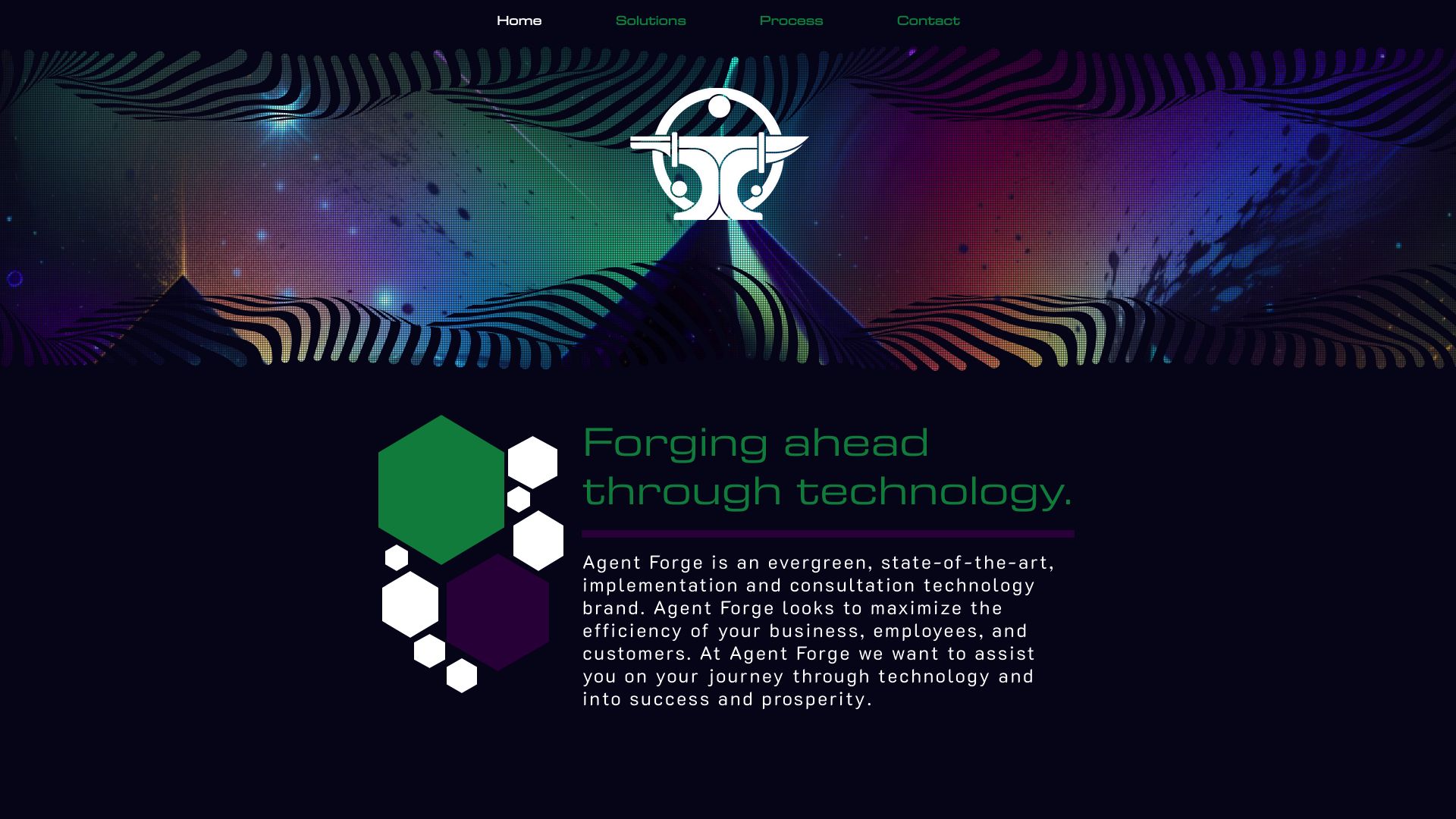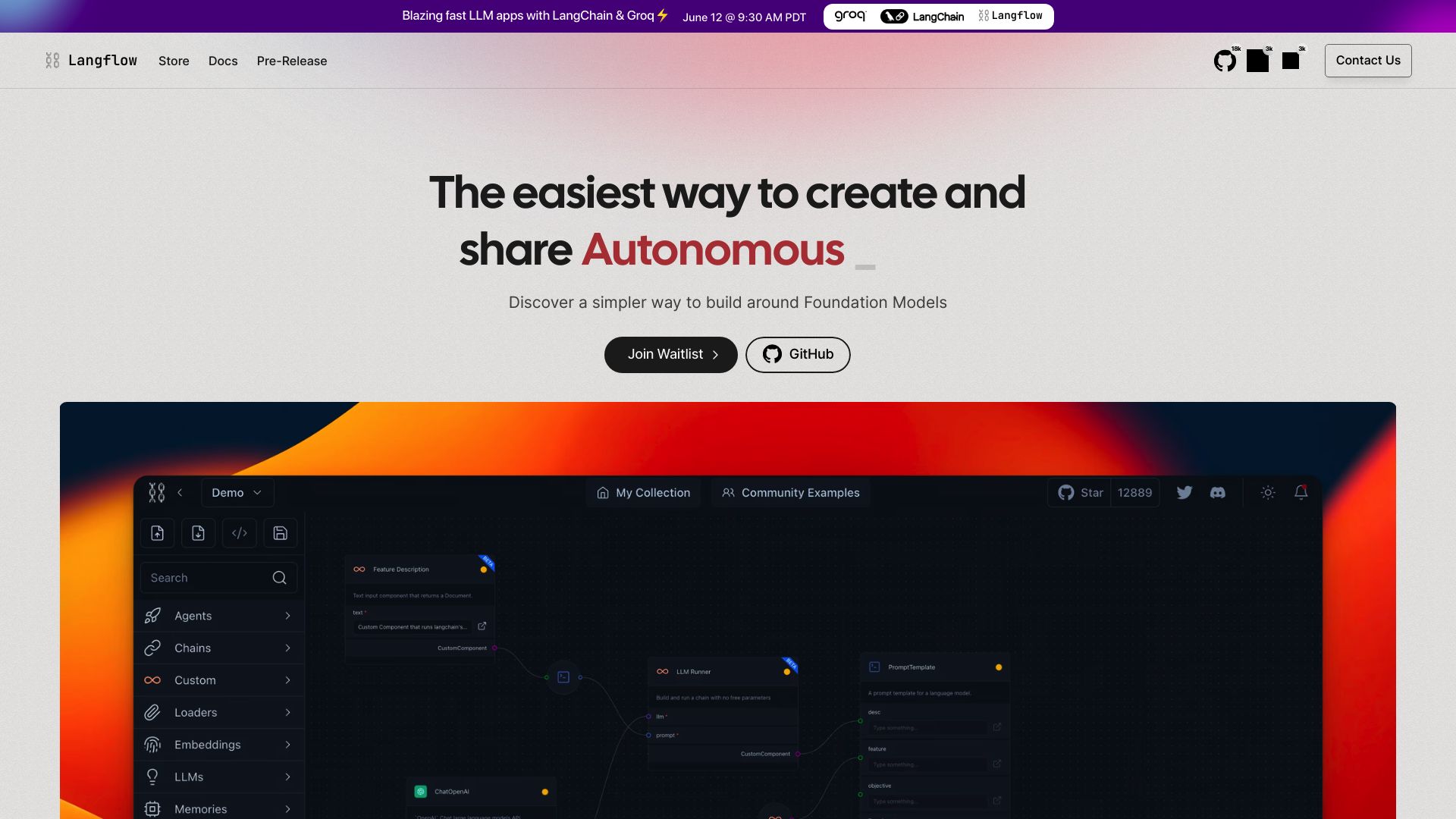Agent Forge vs. Langflow: Comparing AI Development Approaches
AI development platforms revolutionize how businesses harness cutting-edge technology, with Agent Forge vs. Langflow emerging as notable contenders. This comparison delves into their unique approaches: Agent Forge’s code-centric framework for autonomous agents versus Langflow’s visual, low-code platform.
We’ll explore their strengths, limitations, and use cases, contrasting them with SmythOS—a comprehensive solution that combines powerful features, intuitive design, and enterprise-grade security. Whether you’re a developer seeking flexibility, a business leader focused on scalability, or a non-technical user aiming for accessibility, this analysis will guide you through the landscape of AI agent development tools, helping you make an informed decision for your AI journey.
Agent Forge Overview
Agent Forge empowers developers to build autonomous AI agents and cognitive architectures. This open-source Python framework accelerates the creation of intelligent systems capable of automating complex tasks and workflows.
Agent Forge supports integration with leading language models like OpenAI’s GPT, Anthropic’s Claude, and self-hosted options via Oobabooga. The platform’s flexible memory management system, powered by ChromaDB, enables agents to maintain context and learn from interactions. Developers can orchestrate multi-agent scripts, leveraging pre-built templates to jumpstart projects.
Agent Forge empowers developers to build autonomous AI agents and cognitive architectures. This open-source Python framework accelerates the creation of intelligent systems capable of automating complex tasks and workflows.


The framework excels in rapid prototyping of AI assistants, chatbots, and expert systems. Its modular architecture facilitates easy integration of custom data sources and third-party APIs, making it well-suited for automating business workflows and developing intelligent process automation bots.
While Agent Forge offers powerful capabilities, it lacks some features found in more comprehensive platforms. The absence of a visual builder and no-code editor may present a steeper learning curve for non-technical users. Additionally, the framework does not provide built-in explainability tools or a dedicated debug mode, which could impact transparency and troubleshooting.
Agent Forge positions itself as an accessible playground for AI experimentation and development. Its open-source nature and extensibility make it an attractive option for developers and researchers looking to push the boundaries of autonomous agent architectures. However, enterprise users seeking a fully-featured, production-ready solution may find the platform’s current offerings limited in some areas.
Langflow Overview
Langflow transforms AI application development with its intuitive, low-code platform. Designed for both novices and experts, Langflow simplifies the creation of complex AI workflows through a visual interface.


Langflow excels in user-friendly design, offering drag-and-drop functionality for assembling AI components. This visual approach accelerates prototyping and experimentation, allowing users to construct sophisticated AI systems without extensive coding. The platform integrates seamlessly with LangChain, providing access to a wide array of pre-built components like language models and agents.
Langflow transforms AI application development with its intuitive, low-code platform… simplifies the creation of complex AI workflows through a visual interface.
For developers seeking more control, Langflow offers a robust Command-Line Interface (CLI). This tool enables precise configuration of projects, from setting host parameters to managing worker allocation. The platform also prioritizes security, implementing enhanced login mechanisms and customizable user authentication, crucial for public deployments.
Langflow’s strength lies in its flexibility. Users can create custom components using Python scripts, tailoring the platform to specific needs. The integration of a chat interface and embeddable widgets further enhances its utility, especially for building interactive AI experiences. However, while Langflow simplifies AI development, it may present a learning curve for those entirely new to AI concepts, and its capabilities might not match high-code solutions for highly specialized requirements.
Feature Comparison
Agent Forge and Langflow diverge significantly in their approaches to AI agent development. Agent Forge excels as a flexible, code-centric framework for building autonomous agents, while Langflow prioritizes visual development and ease of use.
Agent Forge’s strength lies in its customizability and support for various large language models. Developers can craft sophisticated agents using Python, integrating with models like GPT and Claude. However, Agent Forge lacks visual building tools, potentially increasing the learning curve for non-technical users.
Langflow, conversely, shines with its intuitive drag-and-drop interface, making AI workflow creation accessible to a broader audience. It seamlessly integrates with LangChain, providing ready-made components for rapid prototyping. Langflow’s visual approach accelerates development but may limit fine-grained control compared to Agent Forge’s code-based methodology.
Notably, both platforms have gaps in core security features. Neither explicitly mentions data encryption or IP control capabilities critical for enterprise deployments. SmythOS addresses these concerns comprehensively, offering robust security measures including data encryption and IP whitelisting.
| Agent Forge | Langflow | SmythOS | |
|---|---|---|---|
| CORE FEATURES | |||
| Visual Builder | ❌ | ✅ | ✅ |
| No-Code Options | ❌ | ✅ | ✅ |
| Explainability & Transparency | ❌ | ✅ | ✅ |
| Debug Tools | ❌ | ✅ | ✅ |
| Multimodal | ❌ | ✅ | ✅ |
| Problem-Solving Capabilities | ✅ | ❌ | ✅ |
| Audit Logs for Analytics | ❌ | ✅ | ✅ |
| Work as Team | ❌ | ❌ | ✅ |
| Bulk Work | ❌ | ❌ | ✅ |
| Agent Work Scheduler | ❌ | ❌ | ✅ |
| Logs & Monitoring | ❌ | ✅ | ✅ |
| SECURITY | |||
| Constrained Alignment | ❌ | ✅ | ✅ |
| Data Encryption | ❌ | ❌ | ✅ |
| OAuth | ❌ | ✅ | ✅ |
| IP Control | ❌ | ❌ | ✅ |
| COMPONENTS | |||
| Foundation AIs | ❌ | ❌ | ✅ |
| Huggingface AIs | ❌ | ✅ | ✅ |
| Zapier APIs | ❌ | ✅ | ✅ |
| All other APIs, RPA | ❌ | ❌ | ✅ |
| Classifiers | ❌ | ✅ | ✅ |
| Logic | ❌ | ✅ | ✅ |
| Data Lakes | ❌ | ✅ | ✅ |
| DEPLOYMENT OPTIONS (EMBODIMENTS) | |||
| Deploy as API | ❌ | ❌ | ✅ |
| Deploy as Webhook | ❌ | ✅ | ✅ |
| Staging Domains | ❌ | ✅ | ✅ |
| Production Domains | ❌ | ❌ | ✅ |
| API Authentication (OAuth + Key) | ❌ | ❌ | ✅ |
| Deploy as Site Chat | ❌ | ❌ | ✅ |
| Deploy as Scheduled Agent | ❌ | ✅ | ✅ |
| Deploy as GPT | ❌ | ❌ | ✅ |
| Scalability | ❌ | ✅ | ✅ |
| DATA LAKE SUPPORT | |||
| Hosted Vector Database | ❌ | ✅ | ✅ |
| Sitemap Crawler | ❌ | ❌ | ✅ |
| YouTube Transcript Crawler | ❌ | ❌ | ✅ |
| URL Crawler | ❌ | ❌ | ✅ |
| PDF Support | ✅ | ❌ | ✅ |
| Word File Support | ❌ | ✅ | ✅ |
Best Alternative to Agent Forge and Langflow
SmythOS stands out as the superior alternative to Agent Forge and Langflow for AI agent development. Our platform combines the best of both worlds — the flexibility of Agent Forge and the user-friendliness of Langflow — while offering a more comprehensive and enterprise-ready solution. SmythOS provides a powerful drag-and-drop interface that allows users to create complex AI workflows without extensive coding knowledge.
This visual approach, coupled with our extensive library of pre-built components and integrations, significantly accelerates development time compared to Agent Forge’s code-centric framework. Unlike Langflow, SmythOS offers fine-grained control and customization options, ensuring that advanced users can tailor agents to their specific needs. Our platform excels in security features, addressing the gaps present in both Agent Forge and Langflow. SmythOS implements robust data encryption and IP control measures, making it suitable for enterprise-level deployments.
SmythOS stands out as the superior alternative to Agent Forge and Langflow… offering a more comprehensive and enterprise-ready solution.
We support a wide array of AI models and integrations, including popular services like Zapier, surpassing the limited options available in Agent Forge and Langflow. SmythOS also offers unparalleled deployment flexibility, allowing users to deploy agents as APIs, webhooks, scheduled tasks, or even GPTs — capabilities not fully realized in the competing platforms.
With features like multi-agent collaboration, advanced debugging tools, and scalable infrastructure, SmythOS provides a complete ecosystem for AI agent development and management. Our platform’s ability to handle complex, real-world scenarios while maintaining ease of use sets it apart as the best choice for businesses and developers looking to harness the full potential of AI technology.
Conclusion
Agent Forge and Langflow offer distinct approaches to AI development, each with its own strengths. Agent Forge provides a flexible, code-centric framework for building autonomous agents, while Langflow emphasizes visual development and ease of use. However, SmythOS emerges as the superior choice, combining the best of both worlds and addressing key limitations.
SmythOS stands out with its comprehensive feature set, intuitive visual builder, and enterprise-grade security measures. Unlike Agent Forge and Langflow, SmythOS offers robust data encryption and IP control capabilities, crucial for businesses handling sensitive information. Our platform’s versatility shines through its support for multimodal interactions, problem-solving capabilities, and seamless integration with various AI models and APIs.
While Agent Forge and Langflow may suit specific use cases, SmythOS provides a more complete solution for businesses seeking to harness AI’s full potential. Our platform’s ability to deploy agents as APIs, chatbots, or scheduled tasks, coupled with its scalability and hosted vector database, makes it the ideal choice for organizations of all sizes.
We invite you to explore our diverse range of AI-powered agent templates and experience the SmythOS difference firsthand. Create a free SmythOS account today and join the AI revolution that’s transforming businesses worldwide. With SmythOS, you’re not just adopting AI – you’re future-proofing your organization.
Last updated:
Disclaimer: The information presented in this article is for general informational purposes only and is provided as is. While we strive to keep the content up-to-date and accurate, we make no representations or warranties of any kind, express or implied, about the completeness, accuracy, reliability, suitability, or availability of the information contained in this article.
Any reliance you place on such information is strictly at your own risk. We reserve the right to make additions, deletions, or modifications to the contents of this article at any time without prior notice.
In no event will we be liable for any loss or damage including without limitation, indirect or consequential loss or damage, or any loss or damage whatsoever arising from loss of data, profits, or any other loss not specified herein arising out of, or in connection with, the use of this article.
Despite our best efforts, this article may contain oversights, errors, or omissions. If you notice any inaccuracies or have concerns about the content, please report them through our content feedback form. Your input helps us maintain the quality and reliability of our information.
